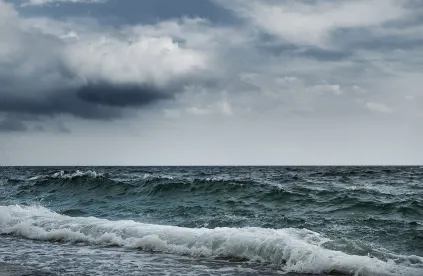Offshore carbon sequestration on the Outer Continental Shelf (“OCS”) could be just over the horizon. The Infrastructure Investment and Jobs Act (the “Infrastructure Act”), signed into law by President Biden on November 15, 2021, amends the Outer Continental Shelf Lands Act (“OCSLA”) to allow for it and directs the Department of the Interior to establish a permitting framework within a year of President Biden’s signature. Companies interested in offshore geologic sequestration should follow the agency’s progress closely.
Definitions
The Infrastructure Act amends OCSLA by adding key definitions for carbon capture and sequestration. First, the Infrastructure Act adds a definition of “Carbon Dioxide Stream,” defined to mean “carbon dioxide that has been captured and consists overwhelmingly of carbon dioxide.” H.R. 3684 § 40307(a)(4). The carbon dioxide stream may include “incidental associated substances”—residuals included in the stream that are derived either from the source of the carbon dioxide stream or the capture process itself. Id. The carbon dioxide stream may also include substances that have been “added to the stream for the purpose of enabling or improving the injection process.” H.R. 3684 § 40307(a)(4). The Infrastructure Act specifically excludes any wastes added to the carbon dioxide stream for disposal from the statutory definition of “carbon dioxide stream.” Id.
The Infrastructure Act also establishes a definition of “carbon sequestration,” which means “the act of storing carbon dioxide that has been removed from the atmosphere or captured through physical, chemical, or biological processes that can prevent the carbon dioxide from reaching the atmosphere.” Id.
Leasing, Easements, and Rights-of-Way
The Infrastructure Act amends OCSLA’s leasing provisions to authorize Interior to grant leases, easements, and rights-of-way on the OCS for the purpose of carbon sequestration. See 43 U.S.C. § 1337(p)(1). Such authorizations may be issued for activities that “provide for, support, or are directly related to the injection of a carbon dioxide stream into sub-seabed geologic formations for the purpose of long-term carbon sequestration.” H.R. 3684 § 40307(b)
Interaction with the Ocean Dumping Act
Title I of the Marine Protection, Research, and Sanctuaries Act, often referred to as the “Ocean Dumping Act,” prohibits the dumping of “any material” in ocean waters. See 33 U.S.C. § 1411. “Material” is defined broadly in the Ocean Dumping Act to mean “matter of any kind or description” with the exception of sewage from marine sanitation devices. Id. § 1402(c).
The Infrastructure Act specifically excludes “carbon dioxide stream[s] injected for the purpose of carbon sequestration” from the Ocean Dumping Act’s definition of “material.” H.R. 3684 § 40307(c). Therefore, if the carbon dioxide stream and the act of sequestration meet the statutory definitions established by the Infrastructure Act, the sequestration will be excluded from the definition of “material” in the Ocean Dumping Act. This change is also important for offshore CCS in state waters, as it removes any uncertainty about the applicability of the Ocean Dumping Act.
Next Steps
The Interior Department will need to begin work quickly if it is to establish a permitting framework for the offshore sequestration of captured carbon within the Infrastructure Act’s one year period after signing. Interior will benefit from the insight of companies that have experience with carbon capture and sequestration operations and offshore operations, and all the better to hear from companies that do (or are interested in doing) both. This will be a heavy lift for Interior—but with the prospect of significantly advancing CCS in the United States we expect there to be great interest in a push towards the 1-year deadline for regulations.






 />i
/>i

